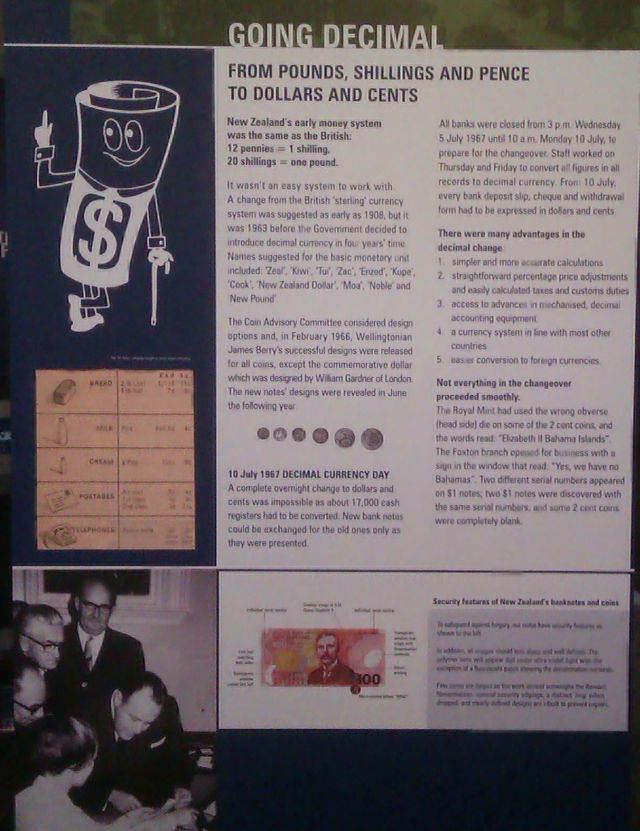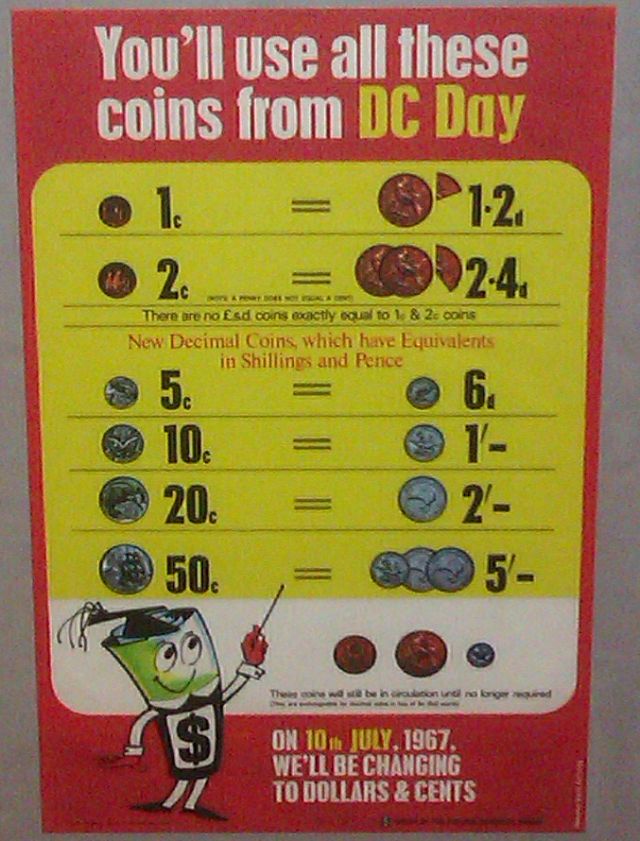
Reserve Bank of New Zealand Museum, coin dies and hubs (with the design mirrored)
New Zealand introduced it's own coinage in 1933 based on the British imperial system which began with 50% silver threepence, shilling, florin, half crown and crown. The copper halfpenny and penny were approved later and issued for New Zealand's centenary in 1940. Due to the rising cost of silver, the 50% silver coins were replaced with copper nickel in 1947.
New Zealand adopted decimal coins on July 10th 1967 Decimal Currency Day with the help of the cartoon character "Mr Dollar". The change wasn't as smooth as expected with the birth of a new mule with a New Zealand 2c reverse and Bahama Islands 5c obverse. Also noted were mismatched serial numbers on notes, two notes with the same number and 2c coins that were simply blank. New Zealand removed 1c and 2c coins in 1990 and introduced $1 and $2 coins in 1991. Everyday trading in New Zealand coins is different to Australia and more intuitive in that their $2 coin is larger than the $1. At this time the design on the 20c changed from New Zealand's national bird, the Kiwi to the Maori 'pukaki' carving as the new $1 coin now depicted the Kiwi bird.
2006 brought a "change for the better" with a new size and composition for the 10c, 20c and 50c coins and the removal of the 5c, a change Australia may look forward to in the future. Tenders were sought with the Royal Canadian Mint the obvious choice with a better quality coin product available.The new coins are plated steel, a cost saving measure with an inner core of steel with layers of nickel and copper. The 10c has a copper appearance and the 20c and 50c a nickel outer layer.
The change in 2006 saw an extensive public awareness campaign and after consultation with the blind and visually impaired community the coins went into circulation. The 20c features distinctive edging known as "spanish flower" which has a smooth edge and seven equidistant rounded indents, this helps it to be easily distinguished from the 50c. The changeover period was short, just 3 months for the public to change their older style coinage for the new. The recalled coins all but paying for the new coins minted. Today there is no place for the older, larger non-plated steel coins, they're not even accepted at banks.

Going Decimal Display at the BNZ Banking Museum, Wellington

Decimal Changeover Day Poster July 10th 1967
Posted by harrisk at April 16, 2012 12:14 PM
Subscribe to our Newsletter


